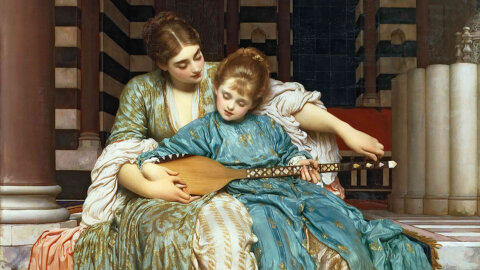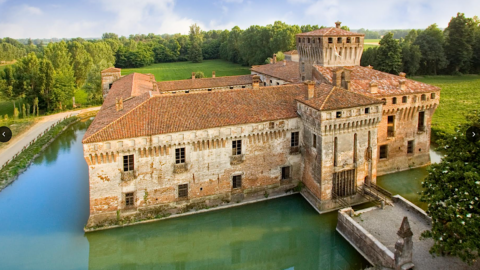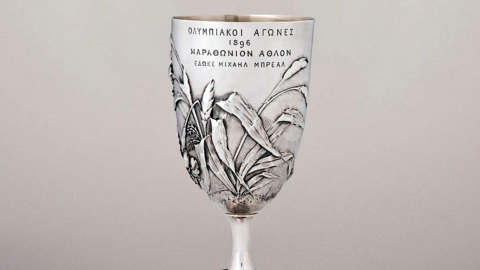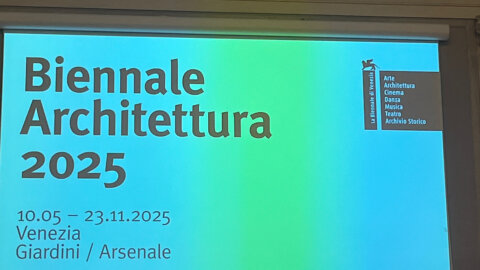There are 300 works by Italian and international artists on display, including paintings, sculptures, drawings, prints, photographs, furniture, ceramics, glass and metal works, fabrics, medals, illustrated books, manuscripts and jewels, is an exhibition that already stands out as unique from the outset. In fact, the exhibition aims to tell the story of the three generations of artists associated with or inspired by Pre-Raphaelite movement, reconstructed through a journey around the world in the most prestigious collections and museums, such as - by way of example - the Uffizi Galleries and Casa Buonarroti in Florence, the Veneranda Fabbrica del Duomo in Milan, the National Gallery of Modern Art and
Contemporary to Rome, from London come works from the British Museum, Royal Academy of Arts, Victoria and Albert Museum, Tate, Royal Collection, from America there are loans from the Museo de Arte de Ponce, The Luis A. Ferré Foundation, Inc. ( Puerto Rico), the Yale Center for British Art in New Haven (United States), the Vassar College and Dahesh Museum of Art in New York, the Fine Art Museum of San Francisco and the Colección Perez Simón (Mexico).
The Pre-Raphaelite movement
Pre-Raphaelitism is a movement that arose in 1848, but whose conclusion is not easy to identify because it fades into the decadent and symbolist movements. The choice of works on display reconstructs the nineteenth-century roots of the Nazarenes and Ruskin, extending to the twentieth-century legacy. For the occasion, direct comparisons were made between modern artists and Italian masters from the fourteenth to the sixteenth century. Here, therefore, are the great masters of the past such as Beato Angelico, Giovanni Bellini, Benozzo Gozzoli, Filippo Lippi, Michelangelo, Guido Reni, Luca Signorelli, Mantegna, Veronese, Verrocchio, Cosimo Rosselli, Palma il Vecchio, Filippino Lippi and the English Dante Gabriel Rossetti , John Everett Millais, William Holman Hunt, John Ruskin, Edward Burne-Jones, William Morris, Ford Madox Brown, Elizabeth Siddal, Evelyn De Morgan, John William Waterhouse, George Frederic Watts, Henry Holiday, William Dyce, Charles Haslewood Shannon, Frederic Leighton, Simeon Solomon, Charles Ricketts, Frederick Sandys.
The exhibition itinerary
These are works that are put into dialogue with the drawings of Elisabeth Siddal, model and muse not only of Rossetti, who was also an artist and poet in her own right. The exhibition proceeds with John Everett Millais, William Holman Hunt, Walter Deverell and Charles Allston Collins, while the fresco room is entirely dedicated to Edward Burne-Jones, whose Small Briar Rose Series and the unfinished Venus Discordia can be admired.
The first works of the "Pre-Raphaelite Brotherhood" follow
This part, divided into small nuclei, begins with Ford Madox Brown (an important trait d'union with previous movements, such as the Nazarenes) and continues with the drawings and first paintings of Dante Gabriel Rossetti, one of the protagonists of the movement. The itinerary proceeds with sections dedicated to the painting of Dante Gabriel Rossetti, who interprets with his female figures a theme dear to the Pre-Raphaelites, for whom the woman is a bivalent figure: of love she in fact embodies both the hedonistic life and the destructive force, duality which makes manifest the human frailties on which Pre-Raphaelitism recursively questions itself. In the following rooms we find the section dedicated to the works of George Frederic Watts and Frederic leighton, who was president of the Royal Academy and played an extraordinary role in spreading Italian culture in Great Britain, whose works are compared with those of Paolo Veronese and Tizianor. Opening the last part of the exhibition are the artists who exhibited at the Grosvenor Gallery, founded in 1877 as a progressive alternative to the Royal Academy, i.e. canvases by Evelyn De Morgan, John Roddam, Spencer Stanope, Fred Appleyard, Phoebe Anna Traquair, decorative works by William De Morgan and Walter Crane, sculptures by Alfred Gilbert and William Reynolds-Stephens. Furthermore, Charles Ricketts and Charles Shannon are present, often mentioned in the catalogs but rarely explored in depth. Finally, the itinerary ends with a section dedicated to Italian artists, who were fascinated by neo-Renaissance trends through architectural projects such as the Galleria Vittorio Emanuele II in Milan (1865) and the porticoes of Piazza della Repubblica in Florence (1885-95), or from decorative works of art such as furniture presented at universal exhibitions.
The exhibition sees the direction of Gianfranco Brunelli and the curatorship of Elizabeth Prettejohn, Peter Trippi, Cristina Acidini and Francesco Parisi with Tim Barringer, Stephen Calloway, Charlotte Gere, Véronique Gerard Powell and Paola Refice.





